Kwon Ki-soo seems to be playing a joke on the observer.
When looking at his paintings online or in print, a person could be forgiven for thinking they were illustrations from a children’s book (many South Korean critics have done just that). The bold colors, simple shapes and figures lend the paintings an infantile quality perhaps more suited to a nursery school than an art gallery.
Standing in front of the large acrylic canvasses at Metaphysical Art Gallery, however, provides the viewer with a different perspective altogether because what at first appears to be cartoonish flora and a comic book character is replaced with works of meditative simplicity that employ techniques and forms of Korean painting that date back hundreds of years. And yet the playfulness remains.
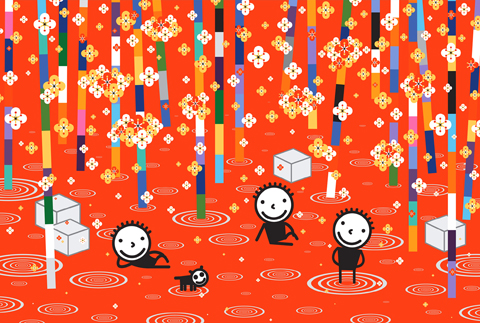
PHOTO COURTESY OF METAPHYSICAL ART GALLERY
The exhibit’s title, Who’s Dongguri?, challenges the viewer to ponder the relationship between the figure, its background and a tradition of painting that has changed little over the centuries.
Kwon, who trained in classical Korean painting at Seoul’s Hongik University, draws on two classical styles of art, sumi and sansui, in his work. Sumi is a form of ink painting that employs four central motifs — plum blossoms, orchids, chrysanthemums and bamboo — to symbolically illustrate the meditative and scholarly life of Korea’s literati.
With sansui, or landscape painting, artists rely on their own impressions of nature’s logic and laws to express a transcendent image of what is actually seen. In other words, the painter paints what he feels as much as what he sees.
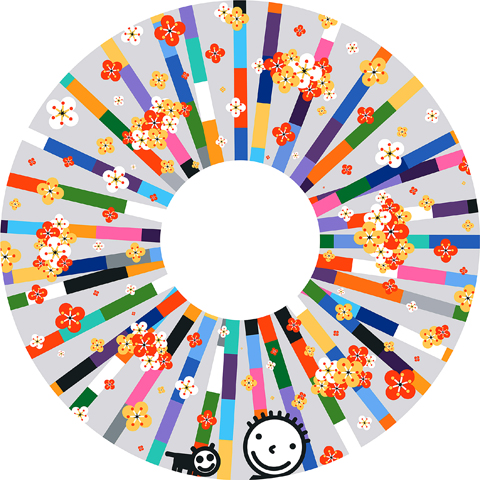
PHOTO COURTESY OF METAPHYSICAL ART GALLERY
Kwon infuses these forms and motifs onto his paintings and adds a visual vocabulary in line with Animamix art, most clearly discernible in Dongguri, a smiley-faced and genderless figure that appears on all canvases either by itself, with a dog, or with a coterie of Dongguri imitations who appear to be living a life free of worries.
Red Forest Rest is a classic example of Kwon moving beyond the confines of Korean art while still remaining within its tradition. It presents four Dongguri figures lounging on the forest floor, surrounded by a colorful bamboo thicket. Interspersed among the bamboo are grey rocks, here seen as cubes, prized in traditional Korean painting for their abstract quality. Though the traditional motifs remain, they are given new life and color in a manner similar to graphic design.
Dongguri’s smiling face alludes to the bearing Koreans (and by extension, Asians) often adopt toward others, especially superiors. The repetitive fixed expression of Dongguri, Kwon seems to suggest, mirrors a society that seeks harmony under a banner of conformity — a prison from which social norms don’t allow the individual to escape.
Kwon’s stark Airplane series dispenses with sumi and sansui and is a nod at the Korean War. It shows rows of featureless planes filling the sky, each piloted by Dongguri. The irony of the smiling figures, apparently willing to participate in an ideological conflict, contrasts with the stark purple, green and red of the sky and the threatening lines of planes flying overhead.
The answer to the question “Who’s Dongguri” is, like art itself, pretty much decided by the individual. For this reviewer, Kwon’s paintings are a statement against tradition and how lack of change imposes a stagnant conformity on people. Kwon’s canvases make a leap beyond tradition — though perhaps a leap that goes too far — and in the process allows room for Korean art to grow in new directions.
EXHIBITION NOTES:
WHAT: Who’s Dongguri?
WHERE: Metaphysical Art Gallery, (形而上畫廊), 7F, 219, Dunhua
S Rd Sec 1, Taipei City (台北市敦化南路一段219號7樓)
WHEN: Until Aug. 5
DETAILS: Open Tuesdays through Sundays, from 11am to 6:30pm
On the Net: www.artmap.com.tw

Last week, on the heels of the recall election that turned out so badly for Taiwan, came the news that US President Donald Trump had blocked the transit of President William Lai (賴清德) through the US on his way to Latin America. A few days later the international media reported that in June a scheduled visit by Minister of National Defense Wellington Koo (顧立雄) for high level meetings was canceled by the US after China’s President Xi Jinping (習近平) asked Trump to curb US engagement with Taiwan during a June phone call. The cancellation of Lai’s transit was a gaudy
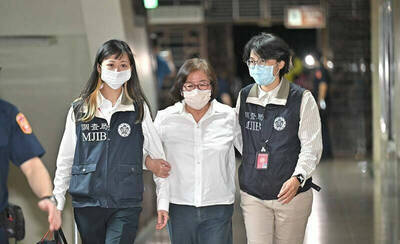
Following the shock complete failure of all the recall votes against Chinese Nationalist Party (KMT) lawmakers on July 26, pan-blue supporters and the Chinese Communist Party (CCP) were giddy with victory. A notable exception was KMT Chairman Eric Chu (朱立倫), who knew better. At a press conference on July 29, he bowed deeply in gratitude to the voters and said the recalls were “not about which party won or lost, but were a great victory for the Taiwanese voters.” The entire recall process was a disaster for both the KMT and the Democratic Progressive Party (DPP). The only bright spot for
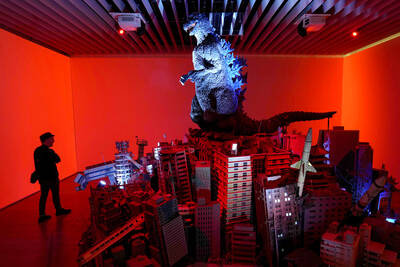
From Godzilla’s fiery atomic breath to post-apocalyptic anime and harrowing depictions of radiation sickness, the influence of the nuclear bombings of Hiroshima and Nagasaki runs deep in Japanese popular culture. In the 80 years since the World War II attacks, stories of destruction and mutation have been fused with fears around natural disasters and, more recently, the Fukushima crisis. Classic manga and anime series Astro Boy is called “Mighty Atom” in Japanese, while city-leveling explosions loom large in other titles such as Akira, Neon Genesis Evangelion and Attack on Titan. “Living through tremendous pain” and overcoming trauma is a recurrent theme in Japan’s
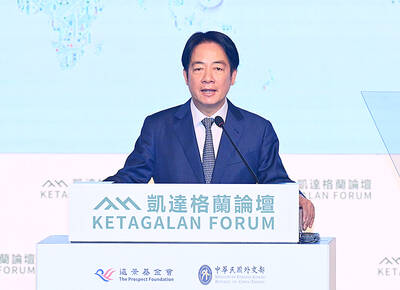
As last month dawned, the Democratic Progressive Party (DPP) was in a good position. The recall campaigns had strong momentum, polling showed many Chinese Nationalist Party (KMT) lawmakers at risk of recall and even the KMT was bracing for losing seats while facing a tsunami of voter fraud investigations. Polling pointed to some of the recalls being a lock for victory. Though in most districts the majority was against recalling their lawmaker, among voters “definitely” planning to vote, there were double-digit margins in favor of recall in at least five districts, with three districts near or above 20 percent in